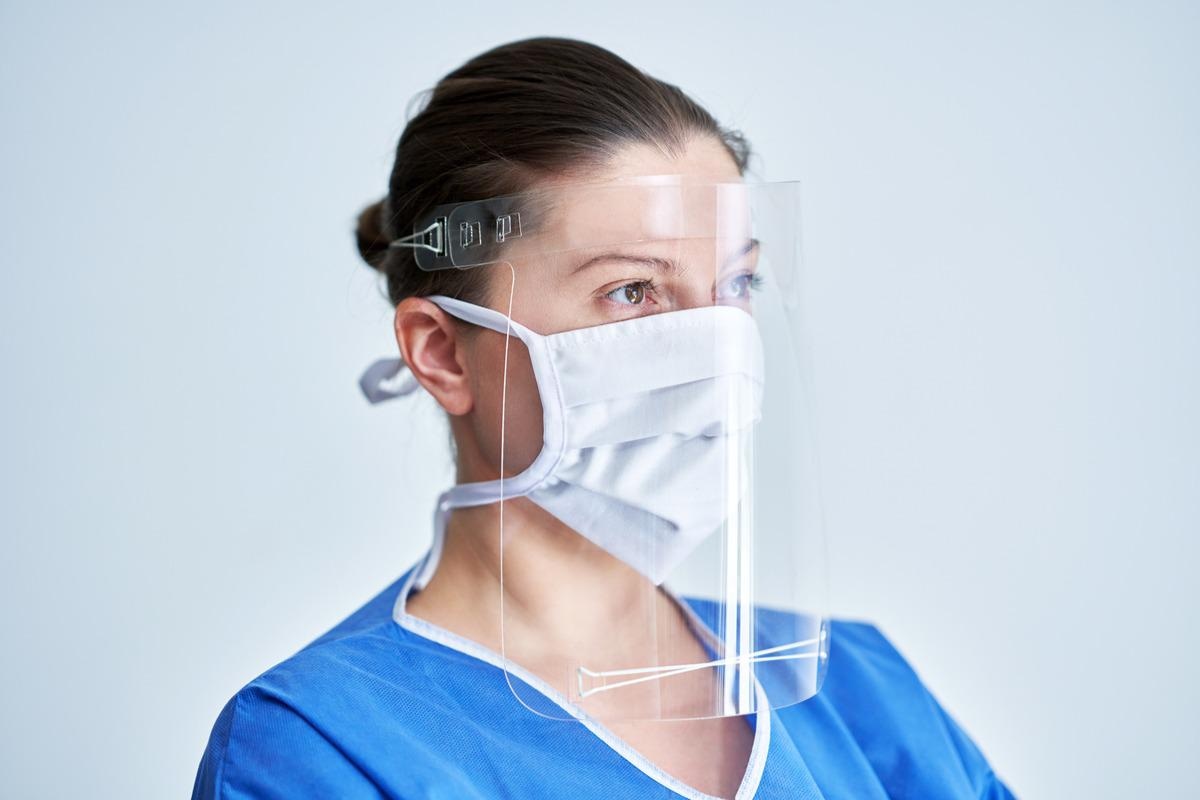Home » Health News »
Healthcare workers at increased SARS-CoV-2 infection risk during second wave
In the first wave of the coronavirus 2019 (COVID-19) pandemic, healthcare workers were at increased risk of severe acute respiratory syndrome coronavirus 2 (SARS-CoV-2) infection. This was largely due to inadequate safety measures and a lack of knowledge about the virus. Consequently, governments and health systems were better equipped and prepared for the second wave of the pandemic.
 Study: Healthcare workers’ SARS-CoV-2 infection rates during the second wave of the pandemic: prospective cohort study. Image Credit: Kamil Macniak/Shutterstock
Study: Healthcare workers’ SARS-CoV-2 infection rates during the second wave of the pandemic: prospective cohort study. Image Credit: Kamil Macniak/Shutterstock
What was the risk to healthcare workers during the second wave of the pandemic? A new study from Denmark evaluates the SARS-CoV-2 infection rates among healthcare workers during the second wave of the COVID-19 pandemic.
A preprint version of the study is available on the medRxiv* server while the article undergoes peer review.
COVID-19 and healthcare workers
During the first wave of the COVID-19 pandemic, there was a widespread lack of personal protective equipment (PPE), confusing PPE guidelines, lack of SARS-CoV-2 testing and contact tracing.
Due to direct and regular contact with COVID-19 patients, healthcare workers were at highly increased risk of COVID-19. Healthcare workers reported increased SARS-CoV-2 positivity by polymerase chain reaction (PCR) testing after close contact with patients, co-workers, household members, and other persons outside work with COVID-19.
However, during the second wave of the COVID-19 pandemic, there was a considerable increase in preventive measures across the globe. Due to these preventive measures, it was expected that the healthcare workers would have lower SARS-CoV-2 infection rates.
Prospective cohort study
This study was conducted from November 25th, 2020, to April 30th, 2021, during the second wave of the pandemic in Denmark.
On November 17th, 2020, all healthcare workers of the Central Denmark Region were invited to participate in a prospective cohort study. Via smartphone reporting, 5,985 participants reported potential risk factors and symptoms of COVID-19. The study population included 88.6 percent women, and the mean age was 48.0 years.
Every day at 3:30 pm, participants received a text message linking to a questionnaire to report close contact within a one-meter distance with patients and persons outside work with COVID-19. They were also asked if they had close contact with co-workers with COVID-19. They were instructed to follow the preventive measures.
During the study, PCR testing for SARS-CoV-2 was free for all participants. Staff with any patient contact were urged to be PCR tested. Outcomes of the study were SARS-CoV-2 infection rates defined by the first positive PCR test recorded in a register with complete test coverage.
SARS-CoV-2 infection rates among healthcare workers
During 514,165 person-days of follow-up between November 25th. 2020 – April 30th. 2021, 159 positive and 35,996 negative PCR tests for SARS-CoV-2 were recorded.
The SARS-CoV-2 infection rate for healthcare workers following close contact 3-7 days earlier with COVID-19 patients was 153.7 per 100,000 person-days or 0.15 percent per day. This corresponded to a three-fold increased incidence rate ratio compared with no contact with COVID-19 patients. Close contact with persons outside work with COVID-19 showed an almost 18-fold increased infection rate. In contrast, close contact with co-workers showed a 2.5-fold increased infection rate.
A comparable number of healthcare workers were affected following contact with patients and following contact with persons outside work with COVID-19. Comparable patterns of increased risks of loss of taste and smell were seen for all three COVID-19 contact forms. These estimates were mutually adjusted and further adjusted for age, sex, month, and the number of previous PCR tests.
There was an overall two percent non-compliance with PPE guidelines during 187,413 daily procedures. For respiratory procedures with the potential for higher exposure levels, this percentage was 4.8 percent. Thus, participants reported high but not complete day-by-day compliance with PPE guidelines.
Limitations of the study
COVID-19 contact information was partly obtained after the PCR test results were available. This may have inflated the results. Fore-knowledge of PCR test results and COVID-19 contact may have inflated the reports regarding the loss of taste and smell.
Conclusions
During the second wave of the COVID-19 pandemic, the healthcare worker population from Denmark was at increased risk of SARS-CoV-2 infection when in close contact with COVID-19 patients SARS-CoV-2-infected people outside work, and co-workers. There was no shortage of PPE. The compliance with PPE guidelines was high but not complete. Vaccination will not eliminate risks.
The study findings stress the need for increased focus on preventive measures to reduce risks and secure the health of healthcare workers.
*Important notice
medRxiv publishes preliminary scientific reports that are not peer-reviewed and, therefore, should not be regarded as conclusive, guide clinical practice/health-related behavior, or treated as established information.
-
Würtz, A. et al. (2021) "Healthcare workers’ SARS-CoV-2 infection rates during the second wave of the pandemic: prospective cohort study". medRxiv. doi: 10.1101/2021.11.17.21266459 https://www.medrxiv.org/content/10.1101/2021.11.17.21266459v1
Posted in: Medical Science News | Medical Research News | Disease/Infection News
Tags: Coronavirus, Coronavirus Disease COVID-19, Health Systems, Healthcare, Pandemic, Personal Protective Equipment, Polymerase, Polymerase Chain Reaction, PPE, Respiratory, SARS, SARS-CoV-2, Severe Acute Respiratory, Severe Acute Respiratory Syndrome, Stress, Syndrome, Virus

Written by
Dr. Shital Sarah Ahaley
Dr. Shital Sarah Ahaley is a medical writer. She completed her Bachelor's and Master's degree in Microbiology at the University of Pune. She then completed her Ph.D. at the Indian Institute of Science, Bengaluru where she studied muscle development and muscle diseases. After her Ph.D., she worked at the Indian Institute of Science, Education, and Research, Pune as a post-doctoral fellow. She then acquired and executed an independent grant from the DBT-Wellcome Trust India Alliance as an Early Career Fellow. Her work focused on RNA binding proteins and Hedgehog signaling.
Source: Read Full Article



